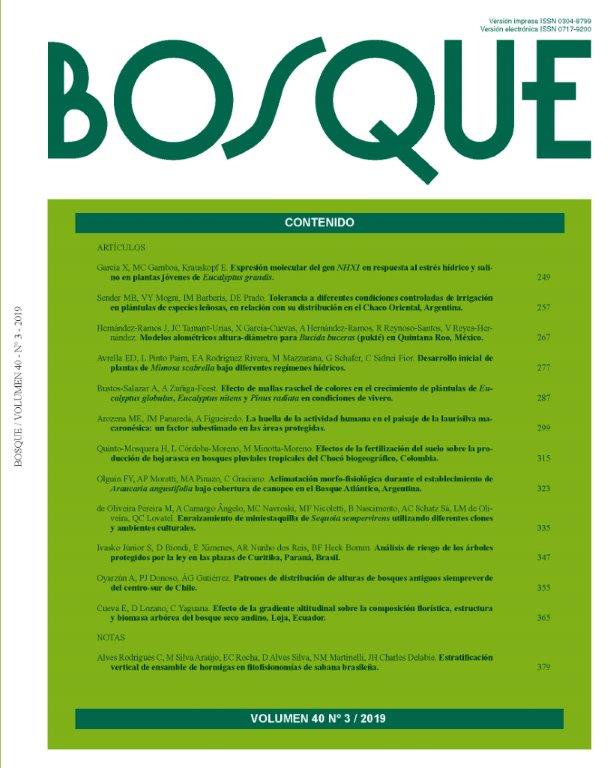Effects of soil fertilization on litter production in tropical rainforests of biogeographic Chocó, Colombia
Main Article Content
Abstract
It has been hypothesized that the net primary productivity of low-altitude tropical rainforests is limited by the concentration of soil nutrients, mainly by edaphic phosphorus. To test this hypothesis, litter production was evaluated as a measure of net primary productivity in two tropical rain forests located in the towns of Opogodó and Pacurita in the biogeographic Chocó. One hundred and twenty-five leaf litter collectors were installed, which were monitored monthly for one year. These collectors were distributed in five fertilization treatments (control, nitrogen, phosphorus, potassium and NPK) to determine the effects of the addition of nutrients on the production of total litter and its components (leaves, branches, reproductive and miscellaneous material (material in decomposition)), and the reproduction / leaf ratio. In Opogodó, the application of nitrogen or phosphorus increased total litter production, nitrogen fertilization increased the production of branches, and the addition of nitrogen, phosphorus or potassium, separately, increased the production of miscellaneous material. Whereas, with fertilization, the production of reproductive material and the relation reproductive/leaves were reduced. In synthesis, fertilization changed the relative contribution of the different litter components, and favored the construction of photosynthetic structures (leaves), compared to reproductive structures. In addition, it was shown that the fall of litter is limited by nitrogen, phosphorus and potassium, which influence the carbon capture of these forest ecosystems. In Pacurita, fertilization had no significant effects on litter production.

